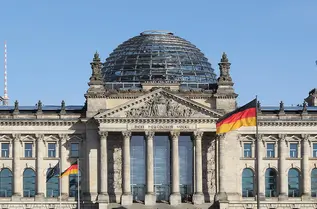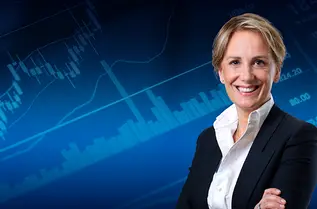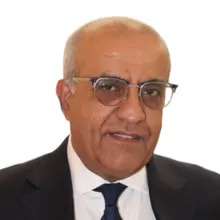- The first, and potentially only, debate between US Democratic presidential candidate, Kamala Harris and her Republican rival, Donald Trump was held on September 10 and was light on policy details.
- Both candidates reiterated some of the pledges they have made before the November 5 presidential election. For Harris, this included outlining her social spending priorities while Trump highlighted his plan to deport millions of undocumented migrants and to hike trade tariffs. However, neither faced detailed challenges on the fiscal or economic consequences of some of their key proposals.
- Foreign policy discussions focused largely on the Russia-Ukraine and the Middle East conflicts without drilling into the details of how the two candidates’ policies would differ. Past comments suggest both sides would take a hawkish stance on China but divergence is likely on how they would approach allies and on issues such as climate change.
The US election debate was light on the two candidates’ policy agendas as both stuck to high-level answers with little in the way of specific measures or details of how they would accomplish their objectives.
The first debate between the two candidates running in the U.S. presidential race was a fractious exchange that shed little new light on policy details but is likely to be politically consequential.
Democratic candidate Kamala Harris was deemed to have performed better than her Republican rival Donald Trump, according to snap polls conducted after the debate. This implies that Harris will likely see an extension of the honeymoon period that has dominated since her nomination, making a slump in poll performance in the short term less probable now. Harris’ campaign team was so satisfied with her performance that they subsequently challenged Trump to another debate in October.

While the US election debate was relatively disciplined and covered all the major domestic and foreign policy issues, it was light on the two candidates’ policy agendas as both stuck to high-level answers with little in the way of specific measures or details of how they would accomplish their objectives.
Vice President Harris was effective in outlining her social spending priorities directed at low-income and young families with some specifics on child tax credits, financial help for first-time home buyers, and tax credits for small businesses. Trump missed the opportunity to ask how these programmes would be funded. Nor did he bring up higher capital gains tax or wealth taxes for high net worth households, and possible capital gains taxes on unrealized gains, all of which are part of Harris’ policy platform. Likewise, Harris was unchallenged on how she might impose a price cap on everyday consumer items, to contain inflation.
Trump focused more on the current administration’s record on the economy, especially inflation, and on immigration. But he was light on any specifics about how his approach would differ. Also, he refused to be drawn on how he would follow through on his recent pledge to deport “11 million” undocumented immigrants. While there is a widespread consensus among economists that this would constitute a significant shock to the labour market that would raise wages and reduce growth, neither the moderators nor Harris asked what impact this would have on labour supply and wages. Trump also did not mention his proposal to cut the corporate tax rate from 21% to 15% or his plan to extend the 2017 tax cuts, which expire next year.
During the discussion of Trump’s higher trade tariffs proposal, Harris was able to cite the broad consensus among economists that this would raise prices for American consumers and reduce their disposable income by an average of $4000 per year. Trump’s riposte was to claim that higher tariffs would have no effect on domestic consumer prices yet bring in billions of dollars to the US since exporting countries would pay, as China did when his administration imposed levies.
Though it might not have had much impact on a late-night TV audience, Harris made the point that many respectable economists estimate Trump’s policy package would raise the US government’s budget deficit by $5 trillion (over 10 years) and reduce growth by more than half a percentage point per year. The same economists estimate that the Harris policy package would also raise the government deficit, by about $2 trillion over 10 years.
Despite the current geopolitical tensions and increasing protectionism there was little discussion of future policy toward China apart from the issue of tariffs. The foreign policy discussion instead focused largely on the Russia-Ukraine and the Middle East conflicts without going into the details of how the rivals’ policies would differ.
Nevertheless, past comments by both candidates allow us to outline our expectations on Trump and Harris’ respective foreign policies.
There would be broad overlap in Middle East policy: the US would continue to support Israel, even though Harris would likely increase pressure on a two-state solution, while Trump would likely allow greater involvement of Saudi Arabia in Middle East policy matters.
Both sides are hawkish towards China. However, Harris would likely pursue a continuation of Biden’s policy with a focus on containing China’s rise in technology sectors, while Trump’s approach would be more holistic. Both sides will likely continue to pursue protectionist industrial policies that seek to support American industries and will expect Europe to do more on defence matters. Both Harris and Trump have isolationist tendencies, but to different degrees.
The biggest foreign policy divergence would likely be on Russia/Ukraine, where Trump would likely prioritise a ceasefire agreement, while Harris is more concerned with Russia’s longer-term ambitions and would be more apt to support a longer war or attempt to ‘wait Putin out’, even though an interim ceasefire, to allow Ukraine some respite, could still be on the table.
Both candidates also differ in how they would approach allies, with Harris maintaining strong support for NATO and Europe, while Trump would be more likely to revisit existing alliances and apply tariffs against traditional allies. Economic goals would likely be more important than geostrategic ones. Nevertheless, Trump’s approach is likely to be more nuanced than his rhetoric might suggest as many Republicans support strong Europe ties, not least to counter China.
Another divergence relates to climate change matters, where a Harris presidency is more likely to apply climate diplomacy, for example with China, while Trump would double down on fossil fuel production. US energy exports could also become a tool to increase political leverage.
The upside from Trump’s foreign policy ideas is that a ceasefire in Ukraine could be somewhat more likely. By re-entering relations with Russia, the US would likely weaken the strengthening relationship between Russia, Iran and China, in the short term. The downside is economic retaliation for tariffs, a weakening of traditional alliances, and a more difficult outlook for Europe.
Harris’ foreign policy would be best described as a sequel to the status quo, where the US will try to manage the transition to a new global world order, away from the US as hegemon towards multipolarity, with the aim of protecting the current economic and trade system and US economic interests.
Harris’ foreign policy would be best described as a sequel to the status quo, where the US will try to manage the transition to a new global world order, away from the US as hegemon towards multipolarity.





